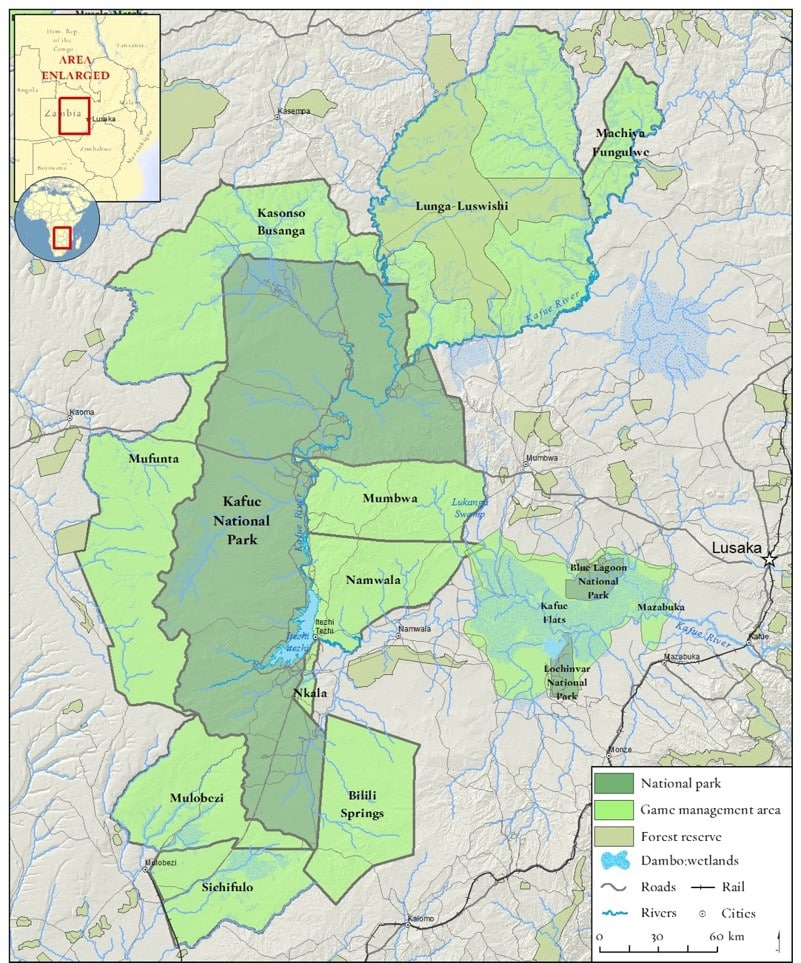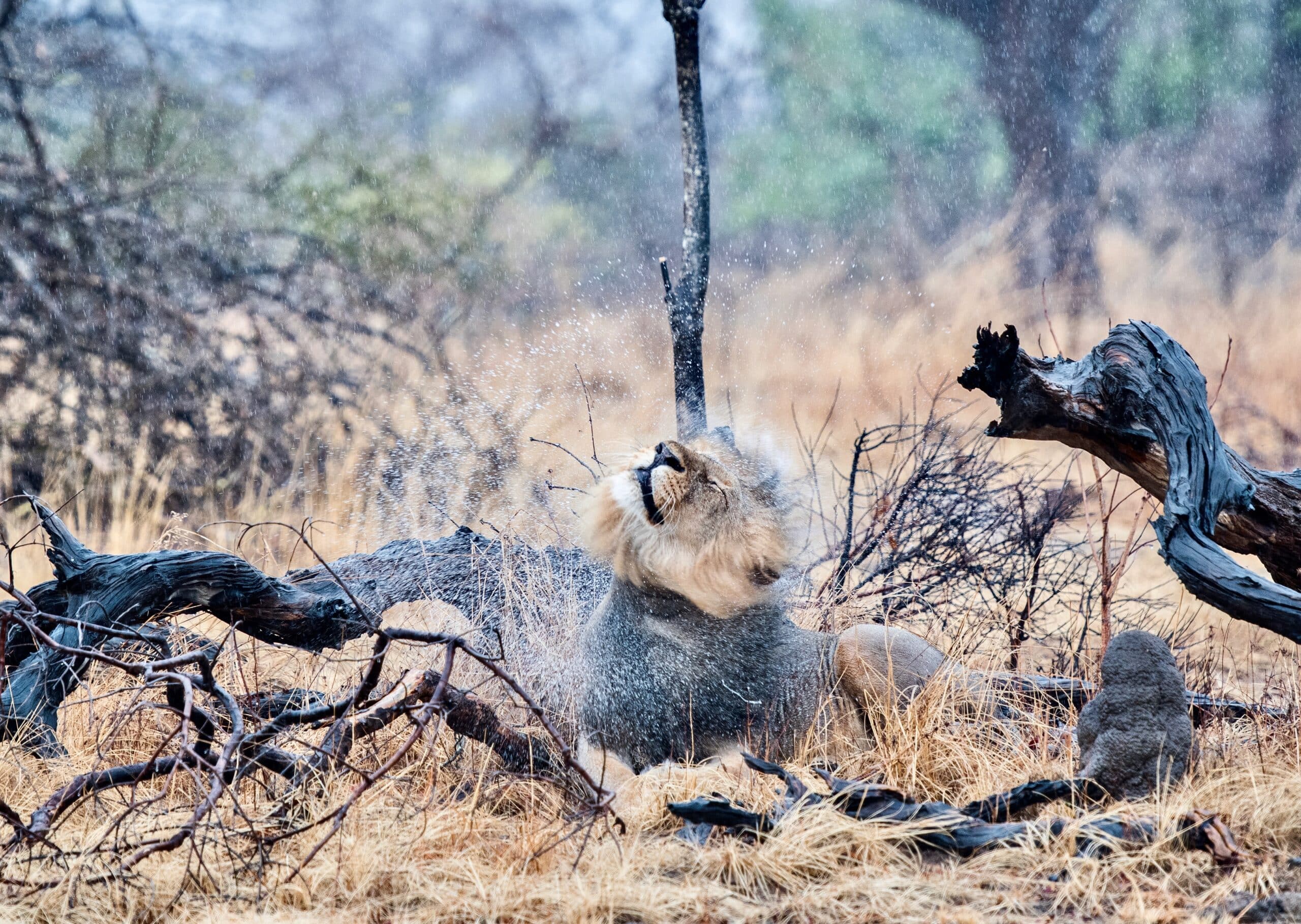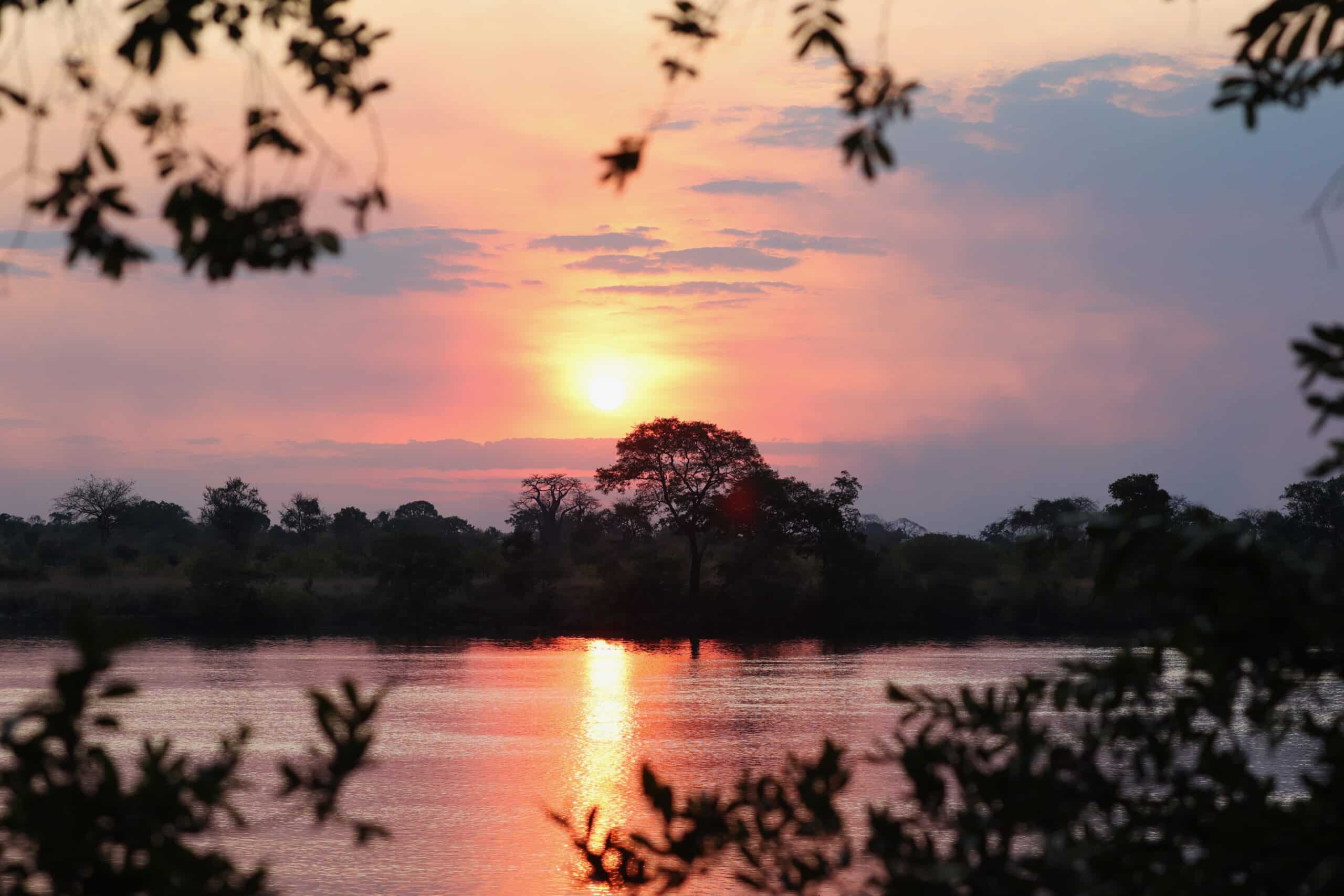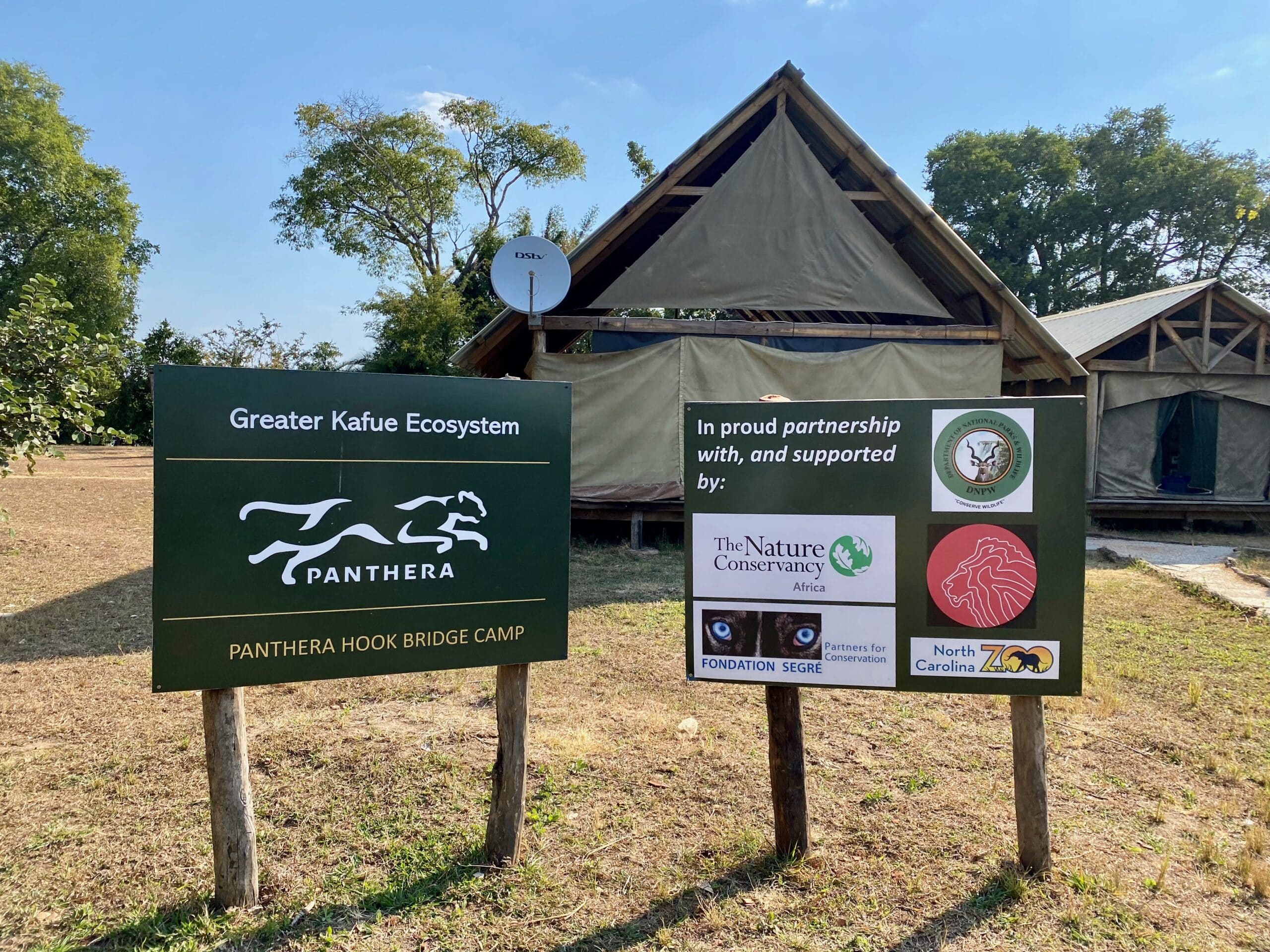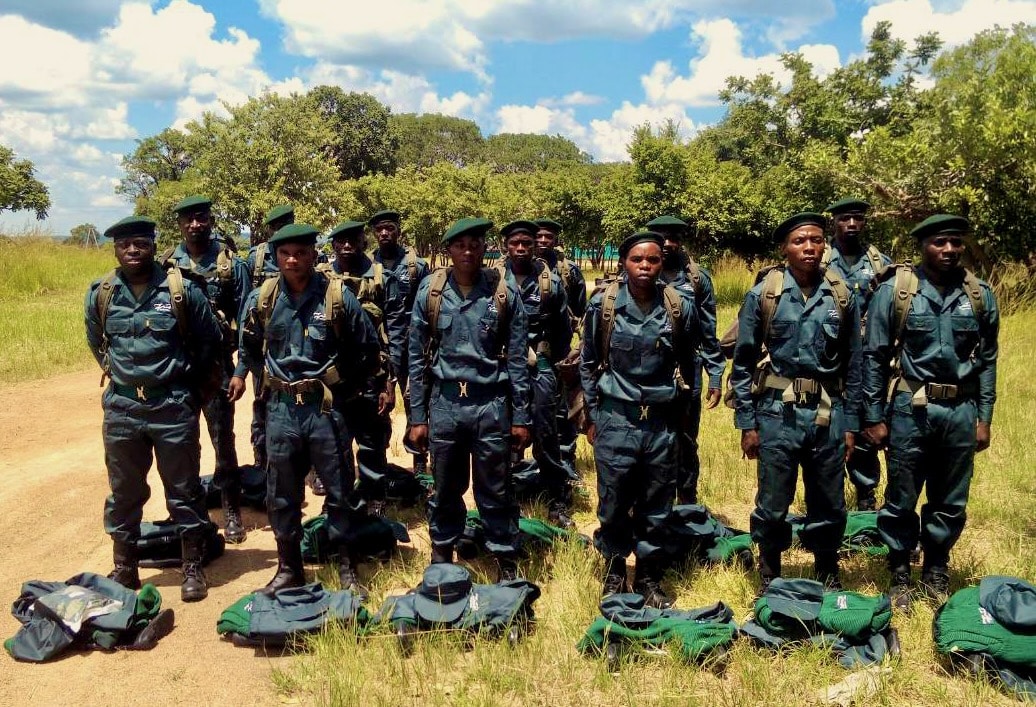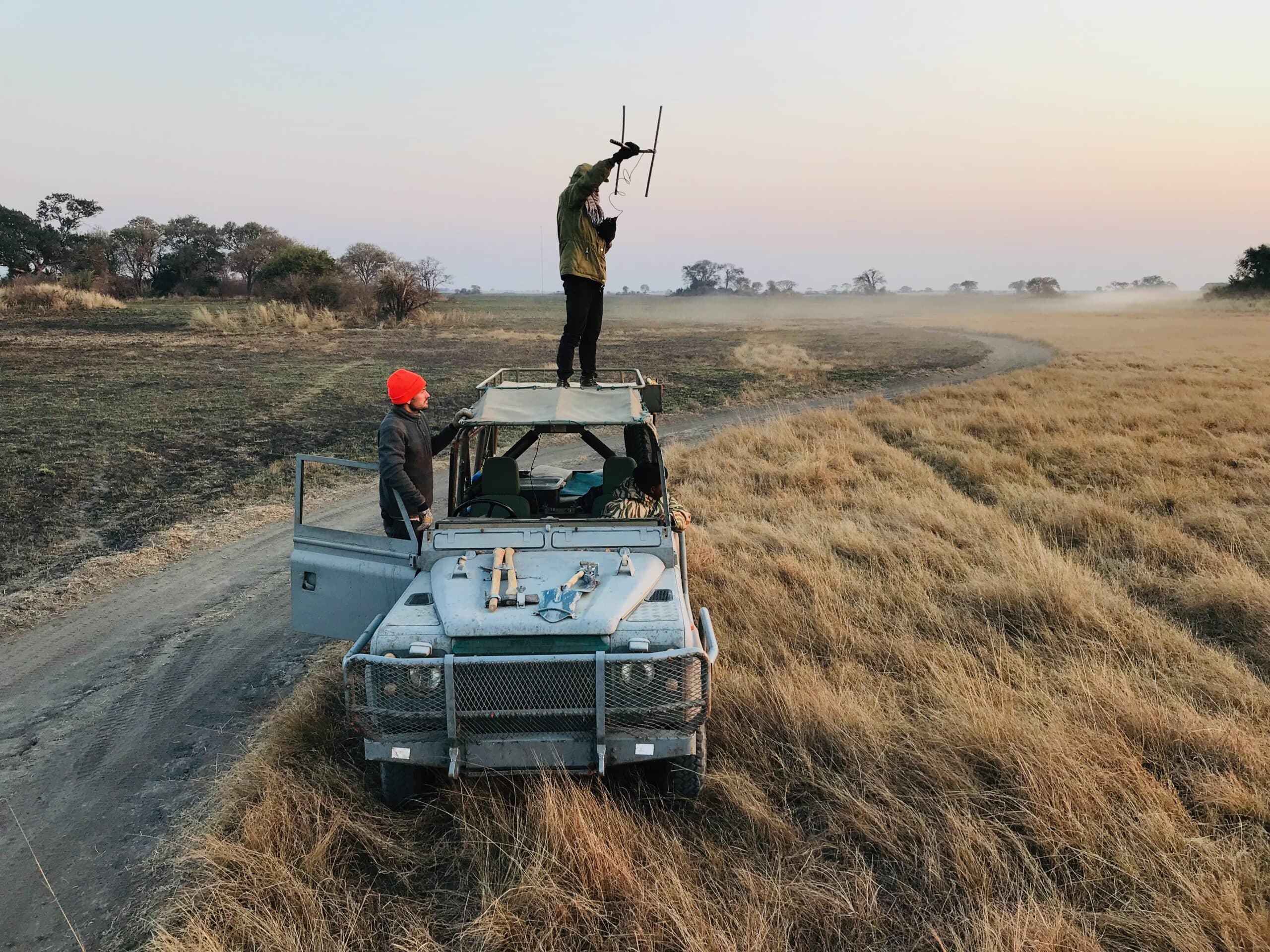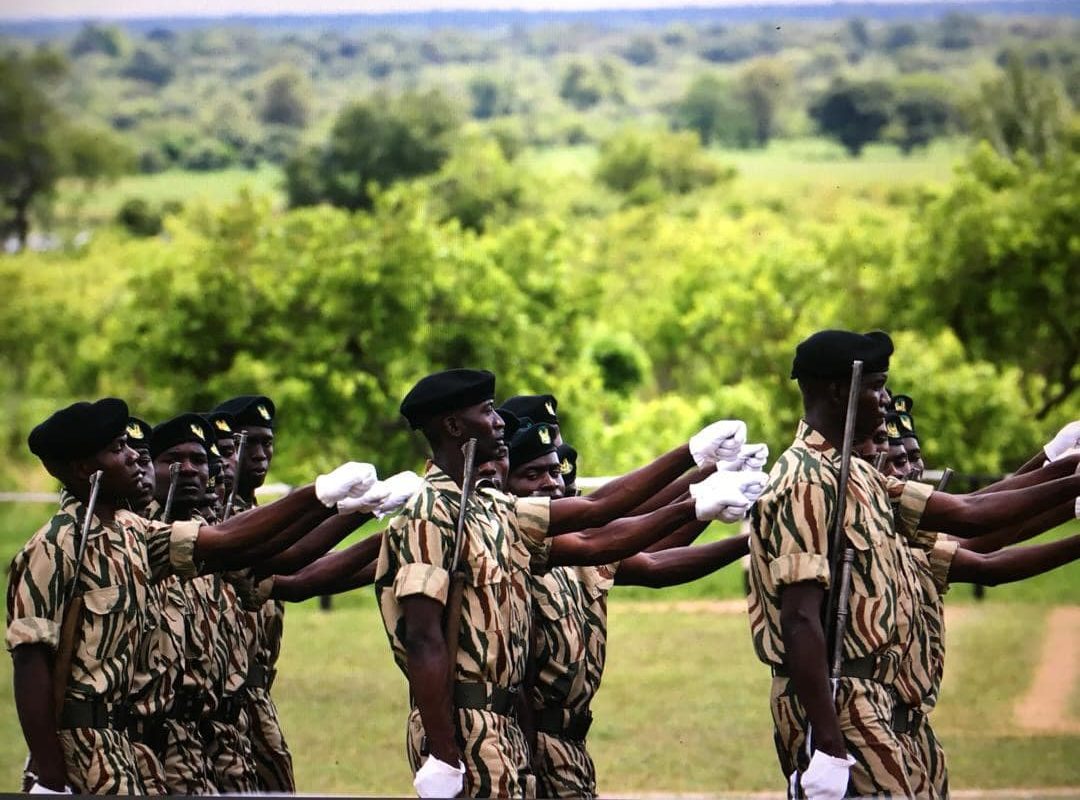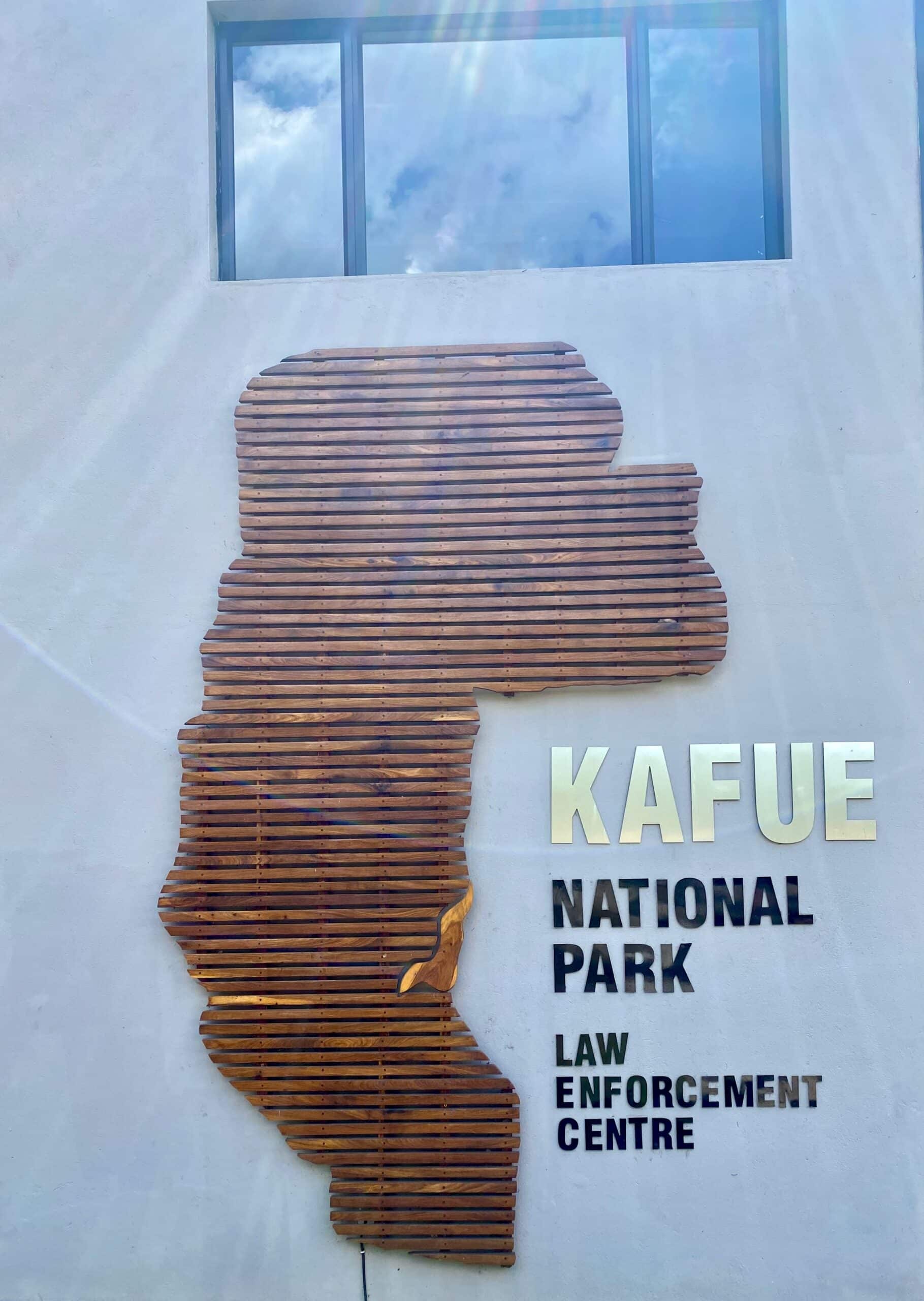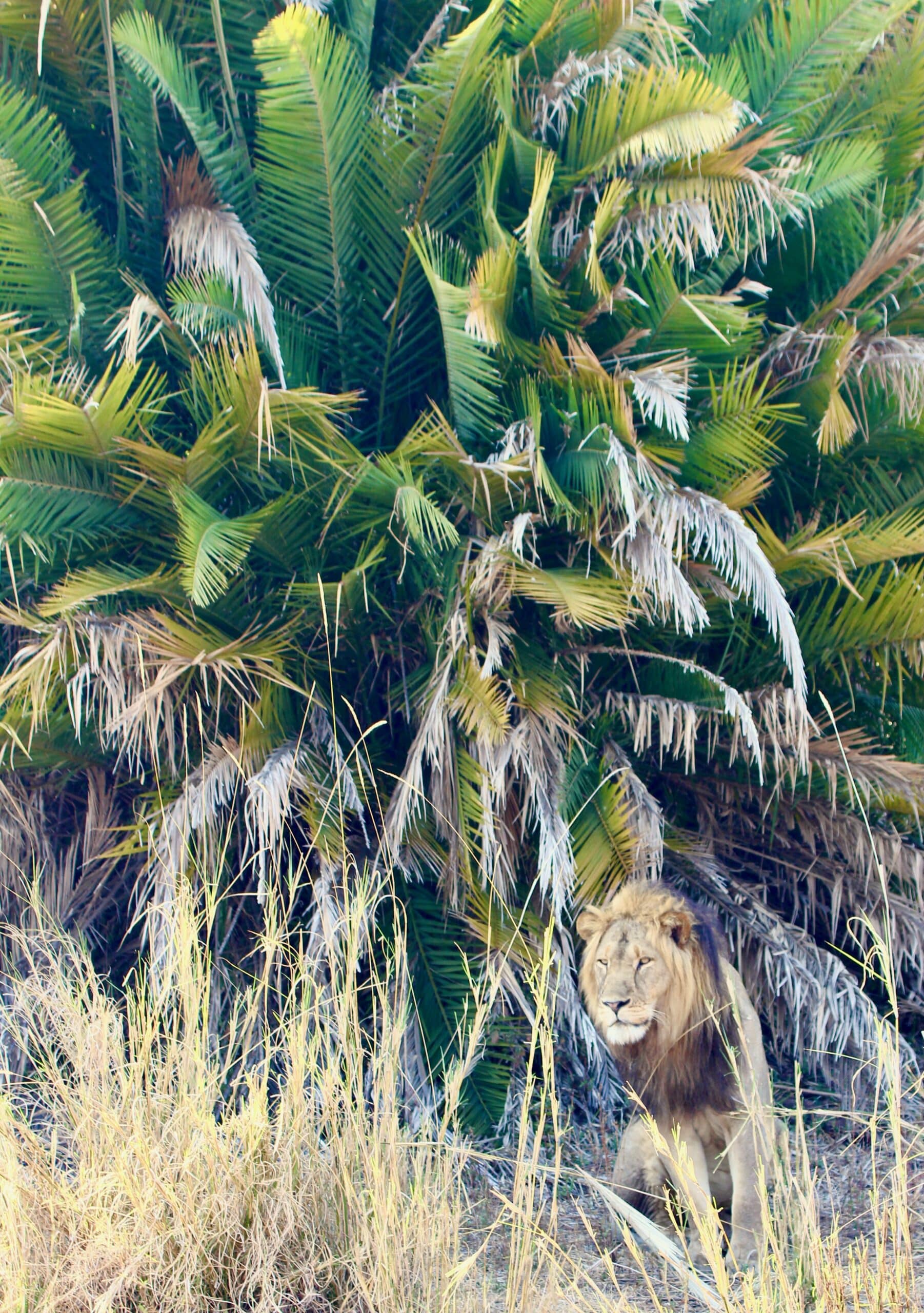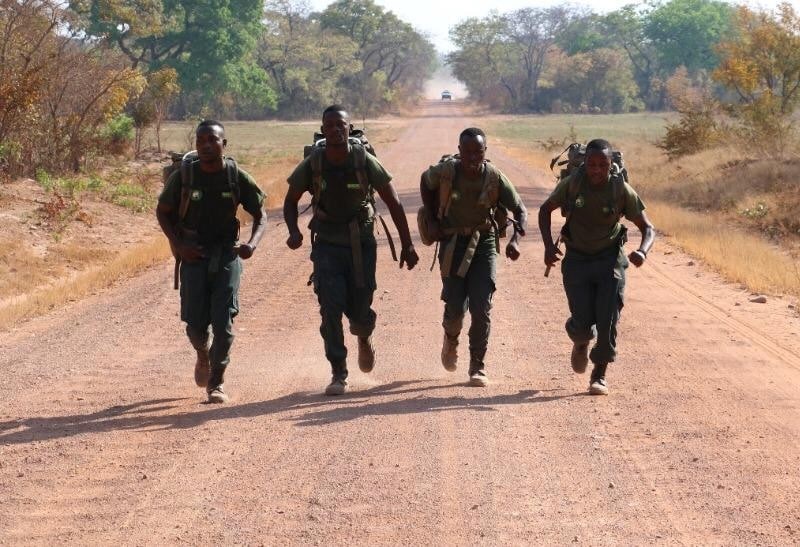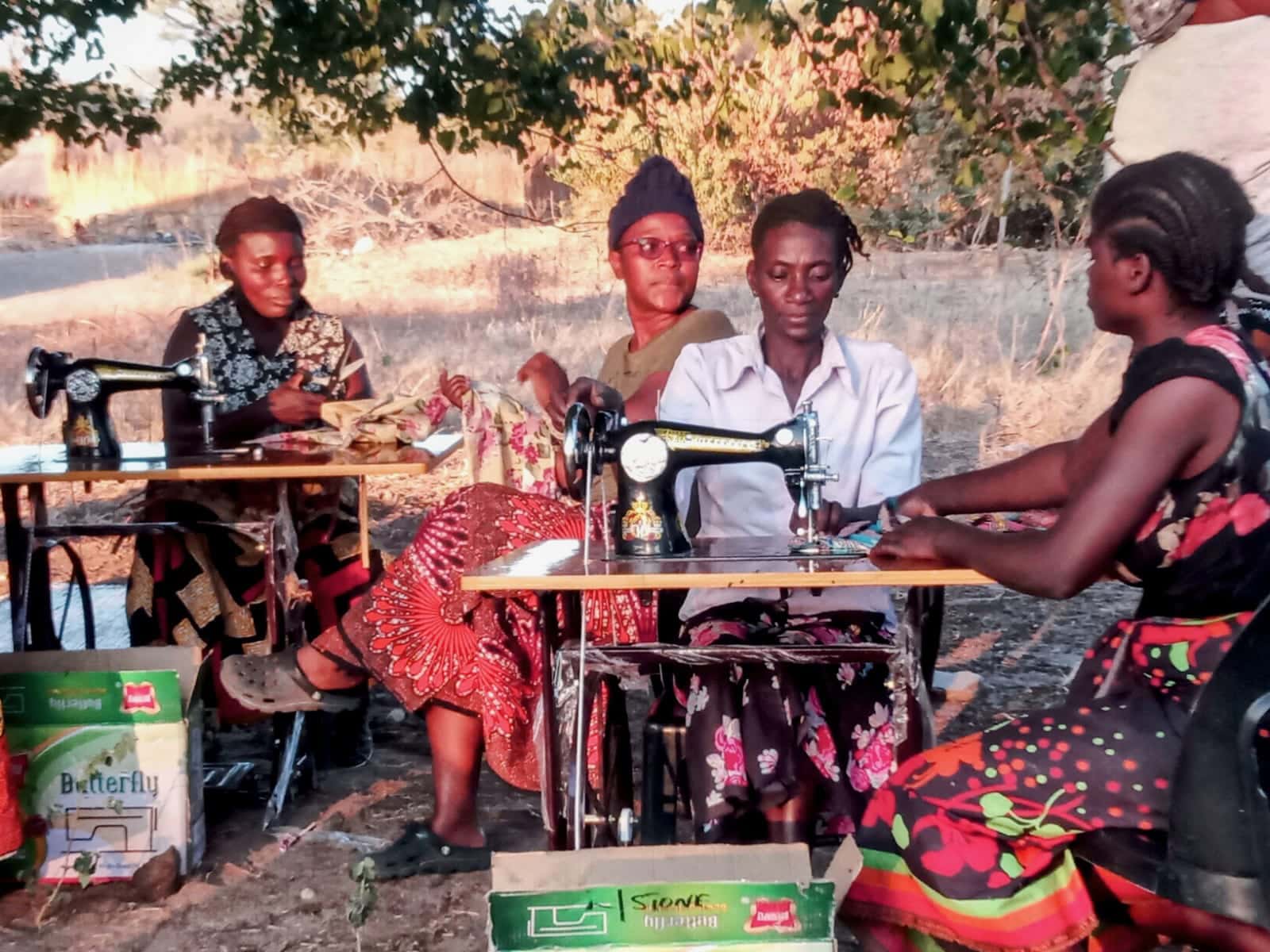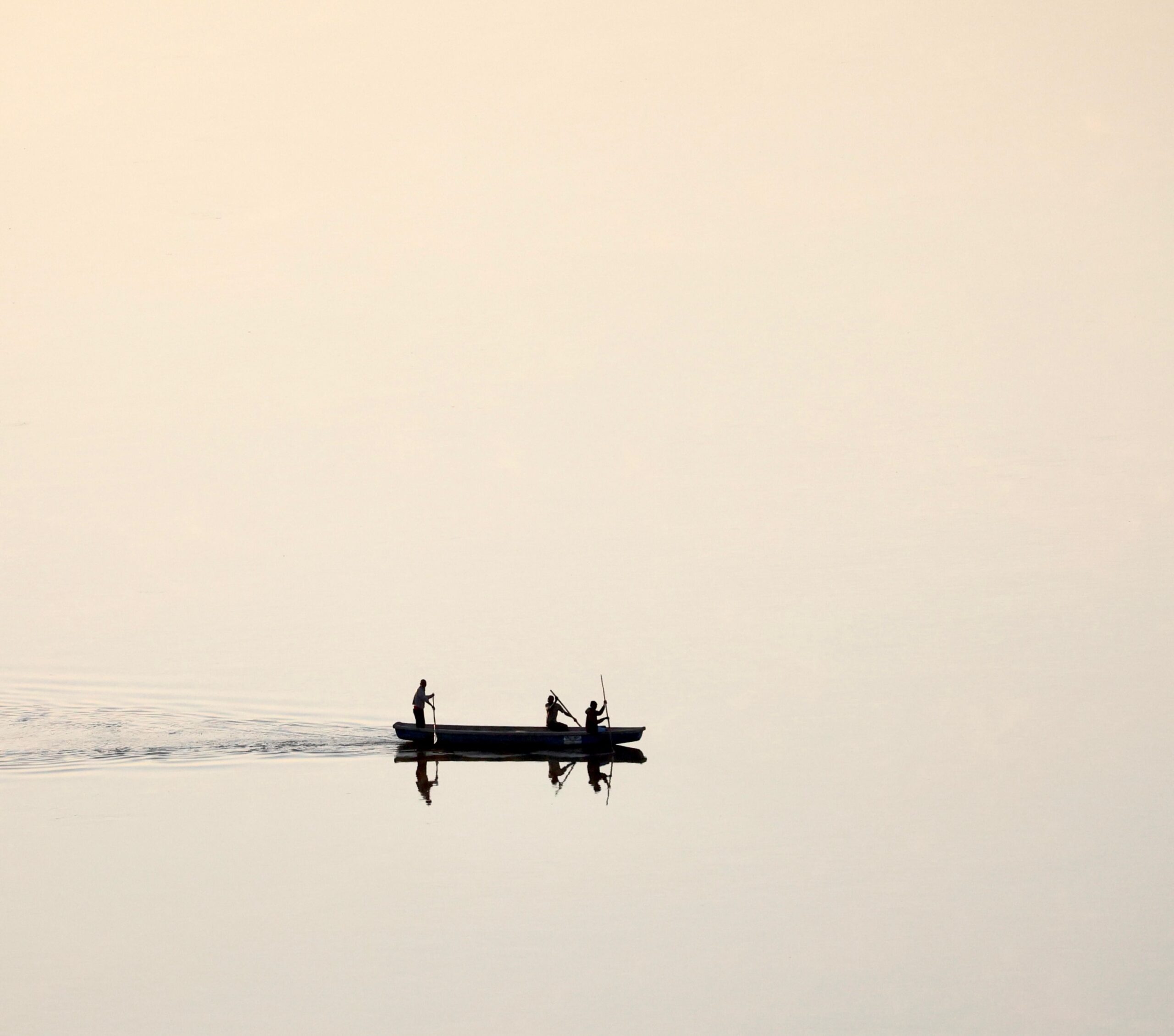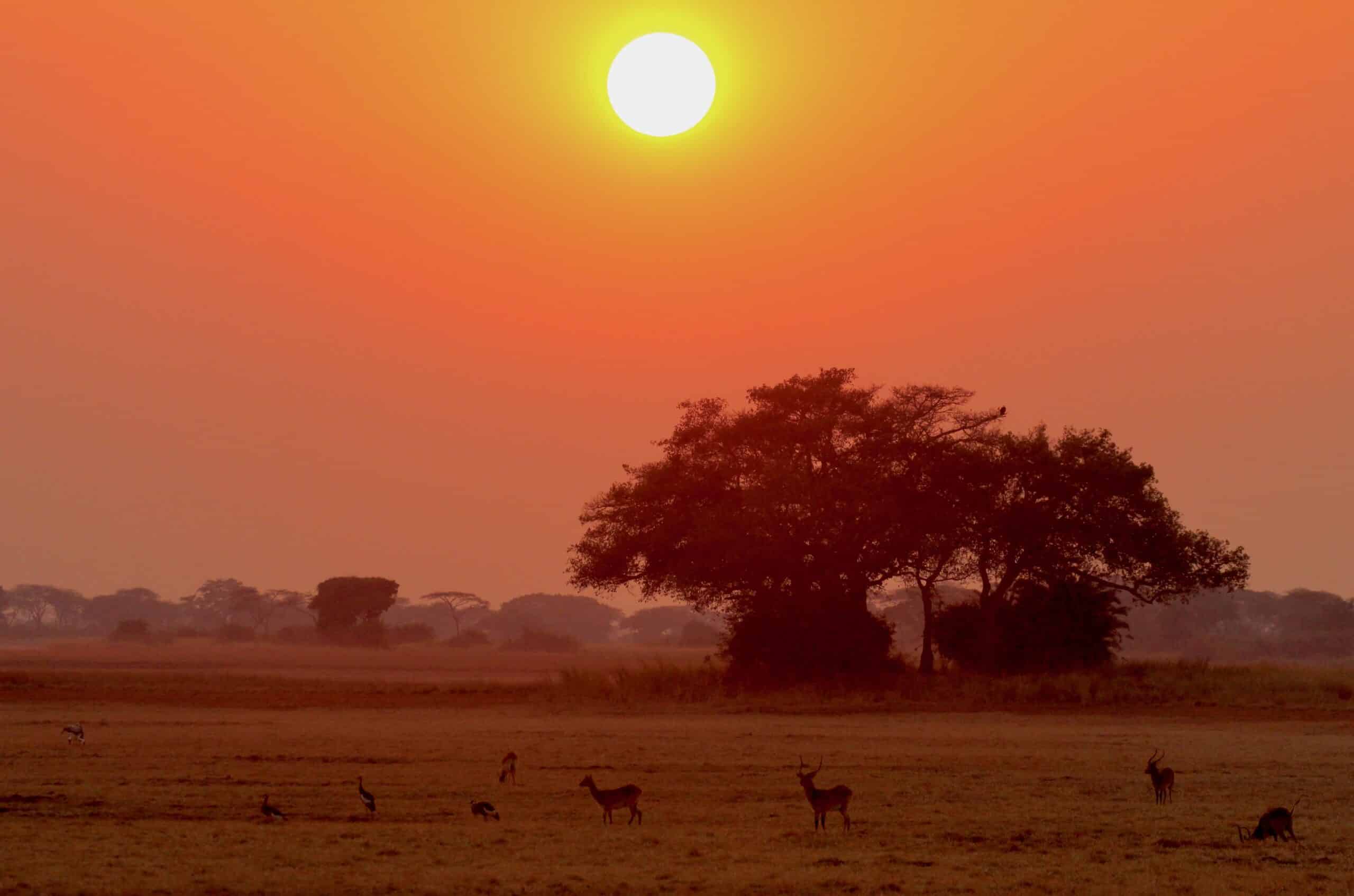Kafue National Park is a massive, 8,600 sq. mile protected area in western Zambia, nested within a complex of Game Management Areas (GMAs). Together, these protected areas comprise a massive block of 25,000 sq. miles of wildlands and form the remote northern frontier of the Kavango-Zambezi Transfrontier Conservation Area (KAZA).
I started visiting the Kafue ecosystem in my professional career back in 2012. Back then, the prospects for Kafue seemed dim. There was minimal investment by tourism operators and the wildlife authority—Zambia Wildlife Authority as it was known then, now the Department of National Parks and Wildlife Management (DNPW)—was too thinly stretched to manage the vast area effectively. There were also few NGOs then, with the principal players at the time being Game Rangers International (GRI) and the Zambian Carnivore Programme (ZCP), who were in relatively early stages of their operations and had a fairly modest presence.
In those days, Kafue was highly vulnerable to human pressures. Bushmeat poaching occurred throughout most of the park, with wildlife gradually being depleted. Long-term studies by DNPW and ZCP confirmed that numbers of herbivores were significantly lower than those in similar ecosystems. This caused lion numbers to be suppressed by the reduction of sizable prey species, forcing them to prey on smaller herbivores. This impacted lion pride sizes, cub production, and survival. Most of the park would burn yearly, with frequent hot, late-season fires that removed the last available grazing for herbivores at the most food-constrained time of year.
This caused the park and surrounding GMAs to become very depleted of wildlife and increasingly incapable of generating significant revenues for government or local communities through photographic or hunting tourism. This led to declining revenue for protection and increasing vulnerability of wildlife to illegal activities.
Gradually, prospects started to look up for Kafue. With a forward-thinking approach, the Zambian government engaged effectively with NGO partners and leveraged inward conservation investment. The number of NGOs working in the landscape grew, as did the budgets of the actors working there. GRI expanded their efforts to protect large swathes of land in the GMAs on Kafue National Park’s eastern flank.
Panthera started working in the landscape, and incrementally supported units of community scouts working together with government wildlife police officers to protect three large Intensive Protection Zones in key parts of the park. They also started monitoring lions and providing protection in a halo around the lion prides in conjunction with ZCP and DNPW, and working to create and maintain threatened connectivity between Kafue and the rest of the Kavango Zambezi Transfrontier Conservation Area, together with a variety of other activities.
Musekese Conservation was established with the initial focus of supporting anti-poaching in the northeastern section of the park. These efforts significantly reduced incidents of poaching and snaring of carnivores and set the foundation for potential recovery in that intensive protection zone.
The Zambia Carnivore Programme worked hand in hand with DNPW, Musekese Conservation, and Panthera to monitor carnivores, remove snares from affected animals, and undertake research that helps to guide management. The Nature Conservancy started working with the government to strengthen the management and protection of the GMAs. Mushingashi, a ~380 sq. mile unfenced game ranch neighbouring Kafue, was bought by philanthropist Paul Tudor Jones, who proceeded to invest significant amounts in the management of that property and some of the neighbouring areas. Ntengu Safaris also invested in the protection of Kasonso Busanga GMA.
Collectively, these efforts significantly reduced poaching in the areas that benefitted from protection. Monitoring results indicate that lion numbers have stabilised and in some areas grown, with cub recruitment also having increased, suggesting Kafue’s lion population may be starting to recover.
From that impressive groundwork, a game-changing moment occurred in early 2021 when the Zambian government agreed to a priority support plan by African Parks to bolster the management of Kafue National Park. After a period of 18 months, African Parks were empowered with a full collaborative management partnership to manage the park with DNPW. African Parks presently have a budget of $7.3 million per year for the management of the park, which is a massive increase in resources for the park. This investment is on top of the budgets of the other NGOs that have also shown strong upward trends in recent years. The African Parks/DNPW partnership has dramatically increased the number of rangers working in the park, hired five area managers to oversee law enforcement, developed key infrastructure to support management, and introduced three planes and one helicopter to allow for aerial surveillance and rapid response to illegal incursions.
The arrival of African Parks required some careful planning to achieve optimal alignment of the roles of the various NGO actors working in the landscape. The outcome of that planning is really exciting. African Parks are now managing the park in collaboration with DNPW, with support for wildlife monitoring coming from Musekese Conservation, Panthera and ZCP. The Nature Conservancy, working hand in hand with DNPW, is creating a recovery plan for the GMAs that includes developing governance structures and professional protected area management systems while also retaining and enhancing the ethos of community stewardship and co-management of their natural resources.
Panthera is supporting the management of Mufunta, Sichifulo, and Mulobezi GMAs on top of their efforts to maintain the connectivity between Kafue and KAZA. GRI is supporting the management of Nkala GMA, as well as parts of Namwala and Lunga Luswhishi, and Musekese Conservation are planning to support the protection of the Kasonso Busanga and Mumbwa GMAs. Collectively, approximately $22 million of donor funding is supporting the management of this vast ecosystem, more than 10 times the investment that the area received when I first visited 11 years ago.
At the same time, Wildlife Crime Prevention is working with DNPW to tackle the trade in bushmeat and other wildlife products in the towns and areas around the Kafue ecosystem. It is hoped that the expanding footprint of effective management, coupled with planned reintroductions, will allow herbivore populations to recover and that populations of lions and other carnivores will follow suit.
The far-sighted leadership of DNPW, combined with the willingness of NGOs to collaborate and divide efforts along thematic and geographic lines, is impressive and could provide a model for how to optimise NGO support for wildlife authorities elsewhere in Africa. But some very serious challenges remain. The encroachment in some of the GMAs is extremely rapid and there is a real risk of the loss of vast areas of key habitat and critical buffers for Kafue National Park. The GMAs are enormous and the resources available are still not sufficient to provide them with enough protection. There is a critical need for conservation actors to work with local communities to create sustainable green economies and livelihood opportunities for local people. Achieving the buy-in and support of local people for conservation efforts will be a key prerequisite for success. Significant efforts are already underway by various actors to achieve that goal.
In spite of these challenges, the prospects for the Kafue ecosystem have never been brighter. There is great scope for growing the tourism industry in and around Kafue National Park and creating tourism routes from Livingstone through the Kafue ecosystem, something that Panthera and other actors are working on. Kafue has some truly breathtaking landscapes. Among the vast stretches of miombo woodlands are several large rivers running like life-giving veins through the landscape. There are also countless grassland dambos that punctuate the vast blocks of woodland, and in some places, there are vast, seasonally inundated grasslands.
One such area, the Busanga Plains, is quite incredible. It already hosts significant wildlife populations, and with sufficient protection, the area promises to be extremely rich in the future. A vast, seasonal wetland with permanent channels, the Busanga Plains attracts a great diversity of wildlife, including large herds of red lechwe and the secretive sitatunga, which skulks among the papyrus keeping a low profile. Overall, due to its diversity of habitats, Kafue National Park is home to 21 different species of antelope , one of the greatest diversities of its kind in any park in Africa.
For lions, the greater Kafue ecosystem represents one of the sites with the greatest potential for recovery in Africa. The LRF has invested more in the Kafue ecosystem than in anywhere else, supporting the work of GRI, Musekese Conservation, Panthera, Wildlife Crime Prevention, and ZCP. While significant challenges lie ahead, there is real potential for a massive rebound of wildlife populations in one of Africa’s most spectacular landscapes. Real credit is due to DNPW and the Zambian government for proactively attracting inward conservation investment and for coordinating the efforts of multiple support actors to achieve increasingly effective wildlife management in the landscape. The recovery of lions will also be accurately tracked, as the above consortium of actors is working on a collaborative plan to monitor large carnivores across the system. Watch this space for some lion recovery!


